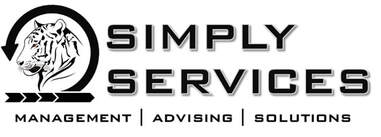|
All businesses whether large or small and regardless of the industry have one thing in common, they all have customers. For many small businesses most clients are a one time interaction where the customer pays in full, but what about the clients that purchase on account from you? Customers more than anyone have a huge impact on cash flow and a recent Manta survey found that the number one concern that keeps small business owners up at night is money and finances at 35% followed at a distant second by competition at 11%.
With clients that are on account you are providing goods and services but will not see payment until a later date. Having a good accounts receivable system or process is crucial. If you think accurate customer balance information is a pain point only for small businesses you would be surprised. I worked for a Fortune 500 and we regularly ran into accounts that were incorrect because they were billed incorrectly or the payment was applied to an incorrect customer. A good receivable or billing system should allow for individual customer account activity. You should use invoices that allow you to record individual goods or services to list out what is being provided. If you use accounting software make sure to set up the list of goods and services and keep them updated so that you select them to add to the invoice which makes the process faster. You can then also run a reports later to help with merchandise purchasing decisions (more of product A and less of product B). Brand your invoices with your business name or logo to give a professional look to them and make sure that they state when the bill is due or any discounts for early payment. Make sure your contact information and online payment portal are listed so customers can easily call or go online to make payments. Unless you only have a handful of customers use account numbers to ensure that payments are posted to the correct account. If a client hasn't paid in a while you should apply the payment to the oldest invoice(s). Have a cutoff date for getting all invoices and payments into the receivable system (usually end of month is a good time). Once all invoices and payments have been entered you can run aging/accounts receivable reports. Accuracy of data entry is crucial for these reports. You don't want to send a paying customer a letter telling them their behind on their payments. The aging report can be a very effective tool to find out which clients are paying on time and which are not and help determine whether or not to continue to do business with specific customers. Make sure that the date settings on the report are correct and reflect your businesses billing terms. Once you have your aging report you can look to determine which clients are over 60 days and over 90 days and reach out to them for payment or to set up a payment arrangements. Ensuring you have an effective receivable/billing system and processes will let you know which customers are current and which customers have fallen behind, will help better manage your cash flow which is critical to smaller businesses and maybe even a better nights sleep. Thanks for your interest and we hope to continue to have meaningful conversations.
0 Comments
|
Archives
November 2020
Categories
All
|


 RSS Feed
RSS Feed